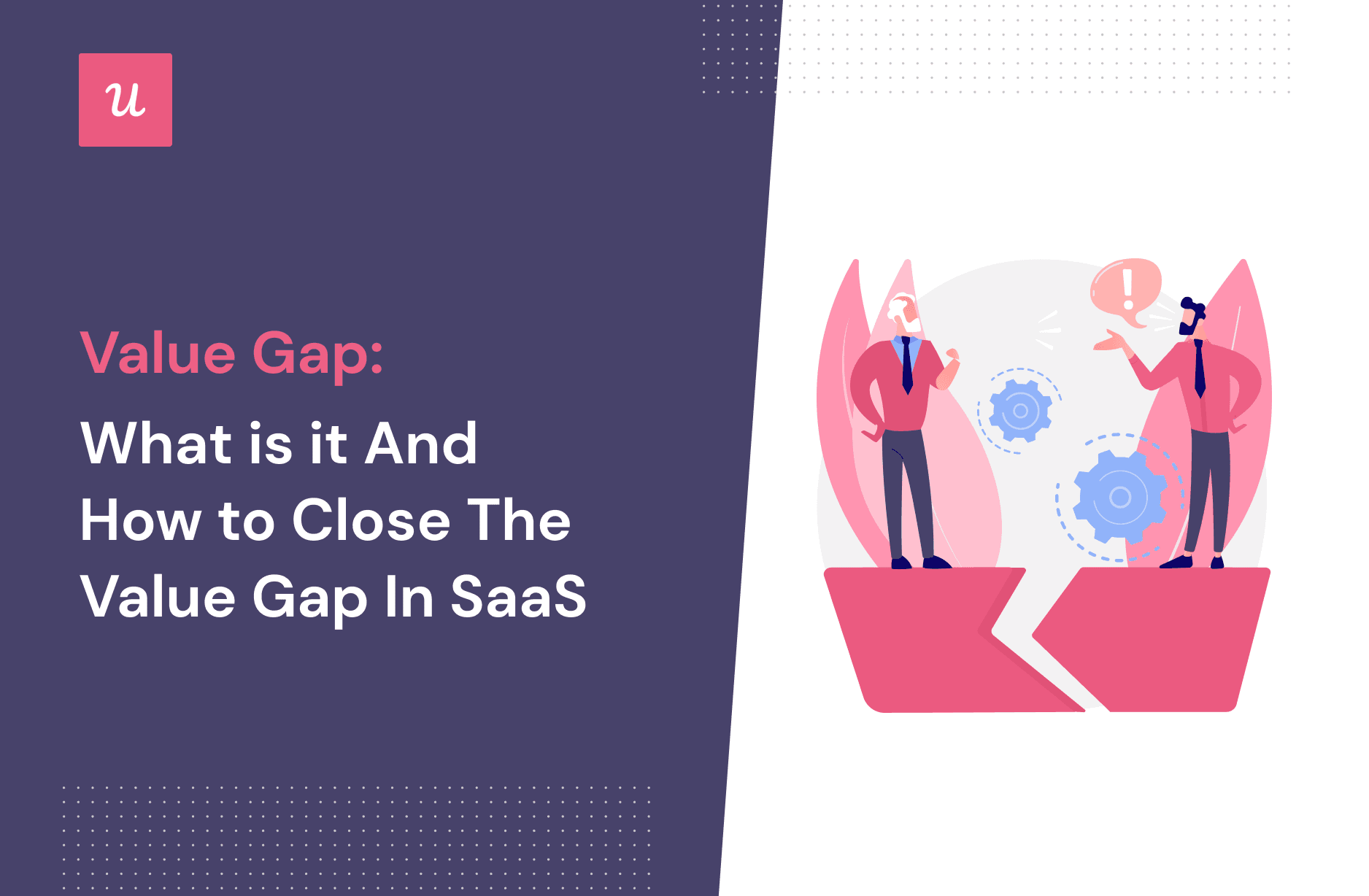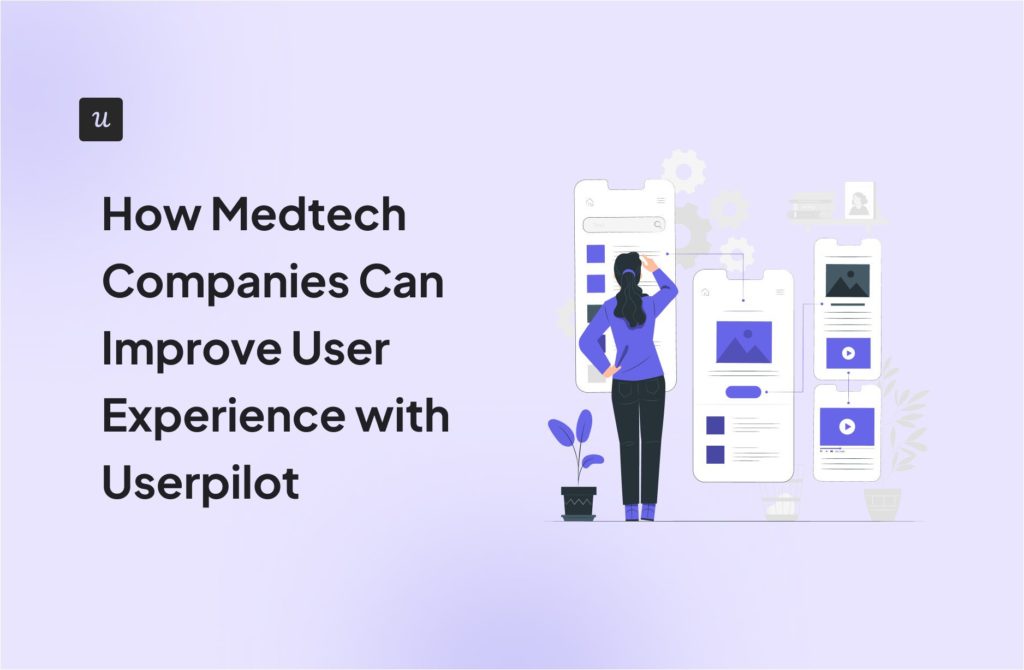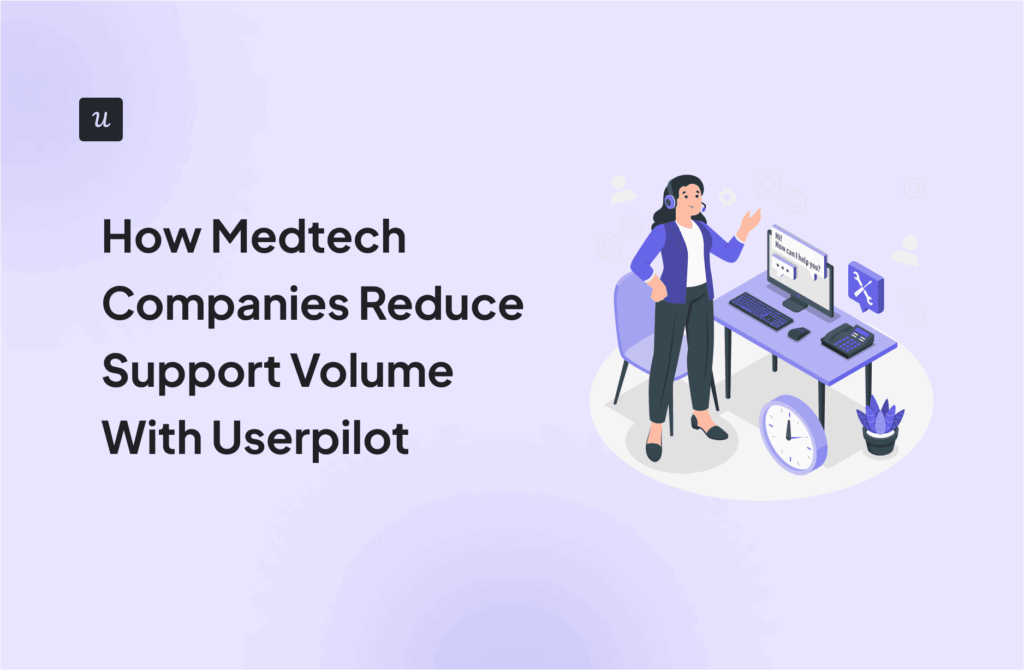
Value Gap: What Is It and How To Close the Value Gap in SaaS?
Get The Insights!
The fastest way to learn about Product Growth, Management & Trends.
What is the value gap in SaaS?
A value gap essentially refers to the difference between the actual value and the perceived value of a product. Simply put, it’s when users expect one thing but experience another.

With so many alternatives in the market, users always have the option to explore other variants until they can finally find what they’re looking for. So, if you don’t act fast, you’ll be losing business.
What are the reasons for the value gap?
The value gap occurs because of different reasons. For example, think about new customers in the actual market who are going to use your product for the first time.
If you haven’t implemented a proper in-app onboarding experience, they may get confused about how to best use your platform. And just like that, you fail to deliver value in the first interaction.
Here are some other marks of a value gap.
- Wrong target audience: If you’re unable to define your user segments clearly, you won’t be attracting the right customers for your company in the first place.
- Overpromising website copy: If you oversell your product and create high user expectations, you need to ensure that these are not met with disappointment. It is thus better to know what you can offer and deliver just that, if not more.
- Long product tours instead of personalized onboarding: Personalized onboarding is faster than lengthy product tours. The latter can cause users to lose interest and skip being guided to the activation point.
- Lack of in-app guidance: This refers to not having enough resources that can guide customers towards feature usage. Some of the examples include the absence of video tutorials, interactive walkthroughs, and an in-app knowledge base.
- Lack of customer support: If your customers use your app regularly, it’s logical that they are going to have questions or issues at some point. If left unaddressed, the large number of complaints can cause severe customer frustration. This is especially true for SaaS products. Complaining customers are friends to your business as they give you a chance to improve your product or customer experience.
- Buggy product: SaaS applications can contain plenty of bugs that can ruin the product experience. You should focus on addressing and fixing these bugs as soon as you can. If left unchanged, you will not only lose your existing customers but also be unable to attract new ones.
How to identify a value gap in a SaaS product?
There are several ways to indicate that the product has a value gap.
- Low trial conversion rate: If people don’t find the value they expected, they won’t upgrade to the paid version after the trial ends.
- Long time to value: When do customers have that “AHA!” moment when using your product? The longer new users have to wait to get there, the bigger the value gap.
- Low activation rate: User activation refers to the moment when the key features of your products are used, allowing the user to experience the value of your product for their use case.
- Low feature usage: If users are not engaged with those features, your product activation is low. This indicates an unsatisfactory product performance.
Why should you use an analytics tool to find the value gap?
The customer journey for SaaS applications consists of several stages.
A product analytics tool helps you see how users are progressing through each point in the customer journey. It allows you to see whether or not your users exhibit regular usage, the obstacles they may be facing, and how you can address those issues.

It further helps you accumulate all the information in one place, including how many users reach the activation point and the time taken to reach this point, which you can use to optimize your product.
How to close the value gap in SaaS?
The value gap can be minimized and even closed if you pay attention to some tiny details. Here are a few prerequisites:
Set the right expectations and understand users’ needs
A well-designed welcome screen can help understand what your users need and set the right expectations for your product. As the first point of contact, it helps you sell your product to new users. You can administer onboarding through surveys, pop-ups, and even emails.
Onboarding gamification can make the experience fun and incentivized if you offer various rewards to users to complete tasks to become “activated”.
Personalizing user experience based on the needs is the next step in the adoption stage. It helps you deliver the right thing to the right customer. Here’s how Kontentino leverages user segmentation to identify the user persona and improve the onboarding flow.

Consider creating mobile onboarding flows, customizing welcome screens, carousels, and slideouts to deliver personalized messaging.
Use interactive walkthroughs to shorten the time to value
Everyone learns differently, so it is best to provide educational resources in multiple formats. The goal is to reduce the educational barrier preventing customers from using the product to its full potential.
For example, interactive walkthroughs can help you improve in-app onboarding and shorten the time to value in adopting a feature, leading to higher customer success.

Going one step beyond and designing personalized interactive walkthroughs can help most users learn about the product. It is quick and efficient, unlike long and boring product tours.
Use onboarding checklists to drive users to the activation point
You can use onboarding checklists to drive users to the activation point, where they experience the product’s value. A great checklist guides your users through various tasks. It helps them identify key features of your product and go straight to activation.

Use tooltips to help users discover relevant features
Tooltips are a great tool to highlight the features that lead to user activation. An onboarding tooltip provides users with contextual information and gets them to experience the value of the product faster.
Tooltips draw attention to your software product and directly help in selling your offered features by displaying them.
You can start building tooltips with Userpilot. Get a demo and see how.
Track activation goals and capture feature usage
Activation can be quite hard to measure. Even so, it has the biggest impact on SaaS revenue. A 25% increase in activation can cause a 34% boost in MRR over 12 months.
With Userpilot, you can monitor your users’ progress along the mapped user journey within and between the different user segments. You can track and analyze your product’s growth and automatically capture feature usage without any coding.
Use self-service support to shorten the learning curve
You can add multiple types of resources to build a help center that can educate the users. This can engage the users and allow them to explore topics that address their issues. This can increase regular usage.
They can have different learning styles, so you need to have a platform that serves multiple types of users. Here’s a guide to help you create self-help platforms.
You can add video tutorials, blog sections, and even an open chat to improve communication with the company and other users. You can create a central platform that users can access for help, which can remove some frustration in using the product.

Conclusion
The value gap is the difference between what users expect from your product and what they receive. Minimizing this gap can help a business deliver more value to its customers.
Every SaaS business owner expects to deliver the greatest value they can to serve their customers.
This can be done by customizing welcome screens to gain more insights about customers, displaying tooltips to shorten the activation gap, and using a variety of resources to help users with in-app onboarding. You can further use a product analytics tool to track the important aspects of product performance.
Want to get started with tracking your product performance and provide a better customer experience? Get a Userpilot Demo and see how you can deliver greater value to your users.





![9 Practical Strategies to Reduce App Churn [+ How to Measure Churn Rate] cover](https://blog-static.userpilot.com/blog/wp-content/uploads/2025/06/9-practical-strategies-to-reduce-app-churn-how-to-measure-churn-rate_87f6e28e73dfeceea8751264731d1406_2000-1024x670.jpg)
